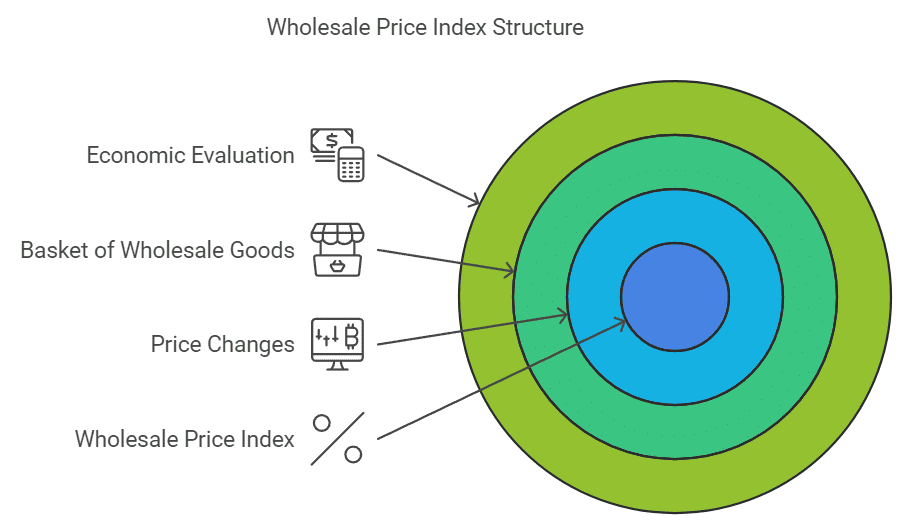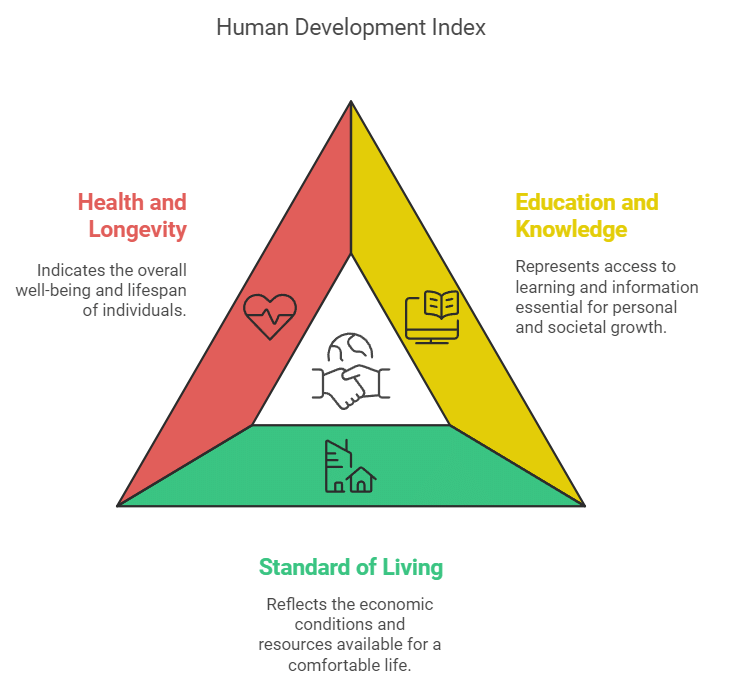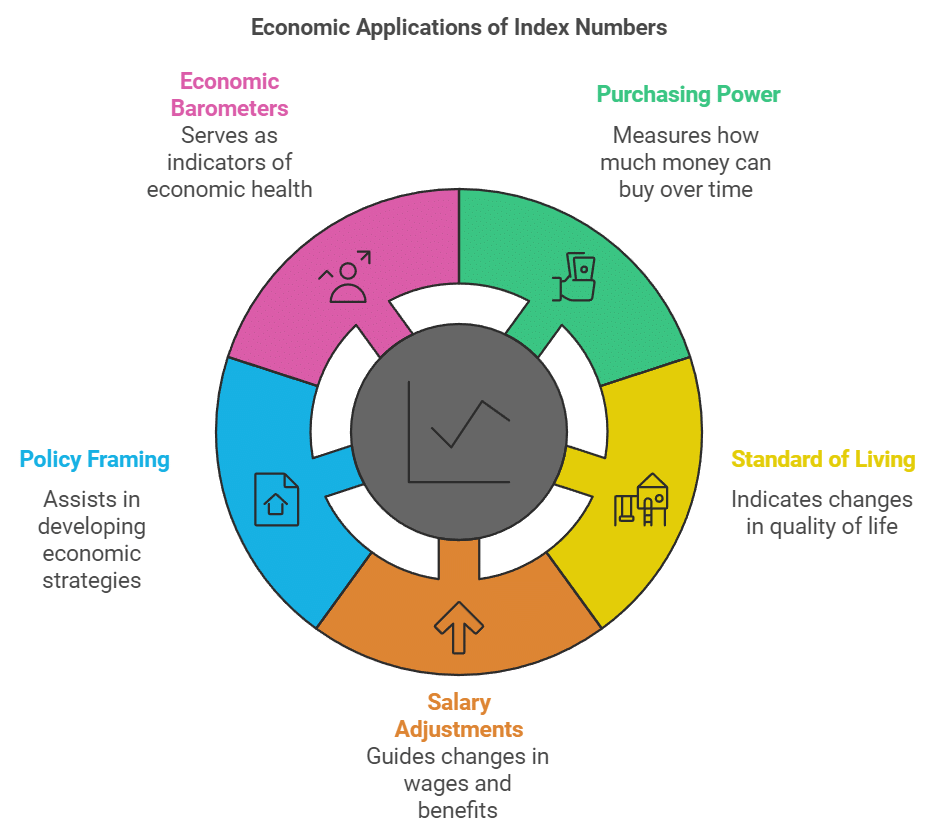Index Numbers Class 11 Economics
Index Number
Index numbers are statistical tools that measure changes in the magnitude of a group of related variables. They provide an overall indication of the trend in the diverging ratios from which they are derived. As defined by Croxton and Cowden, "Index numbers are methods of measuring differences in the magnitude of a set of related variables."
Methods of Constructing Index Numbers

Construction of Simple Index Numbers
There are two methods of constructing simple index numbers.
(i) Simple Aggregative Method:
In this method, we use the following formula
Here, P01 = Price index of current year
ΣP1 = Sum of prices of the commodities in the current year
ΣP0 = Sum of prices of the commodities in the base year
(ii) Simple Average of Price Relatives Method
This method involves calculating price relatives for each commodity and then finding the simple average of all the price relatives.
Price relatives, P01 = 
We can find out the price index number of the current year by using the following formula
Construction of Weighted Index Numbers
- Weighted Average of Price Relative Method
This method involves dividing the weighted sum of the price relatives by the total sum of the weights. Goods are assigned weights based on their quantity in this method.
Here, P01 = Index number for the current year in relation to the base year
W = weigh
R = price relative - Weighted Aggregative Method
Under this method, different goods are accorded weight according to the quantity bought, therefore, suggested different techniques of weighting some of the well-known methods are as under

Some Important Index Numbers
Consumer Price Index:
The Consumer Price Index (CPI) or market basket is a tool used to measure retail inflation in a country. It is an essential method for assessing changes in inflation and deflation. The CPI reflects the fluctuation in the price level of a selection of consumer goods and services purchased by households. The CPI is calculated numerically using the rates of a representative sample of items, whose prices are periodically collected.Wholesale Price Index
The Wholesale Price Index (WPI) is a significant index used in calculating inflation rates in a country. It reflects the price changes of a basket of wholesale goods and primarily focuses on goods traded between corporations, rather than those purchased by consumers. The primary purpose of the WPI is to track price trends that reflect the demand and supply of goods in manufacturing, construction, and industry. By monitoring such trends, the WPI aids in evaluating the macroeconomic and microeconomic conditions of an economy.

Index of Industrial Production
The Index of Industrial Production (IIP) is a monthly index published by the Central Statistical Organisation (CSO) that measures the performance of various industrial sectors in the Indian economy. It is a composite indicator of the level of industrial activity in the economy and reflects short-term changes in the volume of production for a basket of industrial products during a given period compared to a chosen base period.
Sensex
The Stock Exchange Sensitive Index (SENSEX), also known as the Bombay Stock Exchange (BSE), is the oldest stock exchange in India. It is a free-float, market capitalization-weighted index comprising 30 financially sound and established organizations listed on the BSE. These organizations, also known as blue-chip companies, are from various industries in India and are among the most successful and highest traded stocks. The SENSEX is used to track movements in the Indian stock market.
Human Development Index
The Human Development Index (HDI) is a comprehensive measure that seeks to capture three crucial aspects of human development, namely access to education and knowledge, a reasonable standard of living, and good health and longevity. Essentially, the HDI is used to gauge the extent to which development has positively impacted the quality of life for humans.

Issues in the construction of index numbers
- Purpose of index number.
- Selection of base year.
- Selection of items.
- Selection of the prices of items.
- Selection of method of weighting.
- Selection of sources of data.
- Choice of an average.
- Choice of method.
Index numbers in economics
- To measure the purchasing power of money.
- Knowledge of change in the standard of living.
- Adjustment in salaries and allowances.
- Help in framing suitable policies.
- As economic barometers.

|
58 videos|216 docs|44 tests
|
FAQs on Index Numbers Class 11 Economics
| 1. What is the purpose of constructing index numbers? |  |
| 2. What are the methods used for constructing index numbers? |  |
| 3. How are simple index numbers constructed? |  |
| 4. What is the difference between simple and weighted index numbers? |  |
| 5. What are some important index numbers used in economics? |  |



















